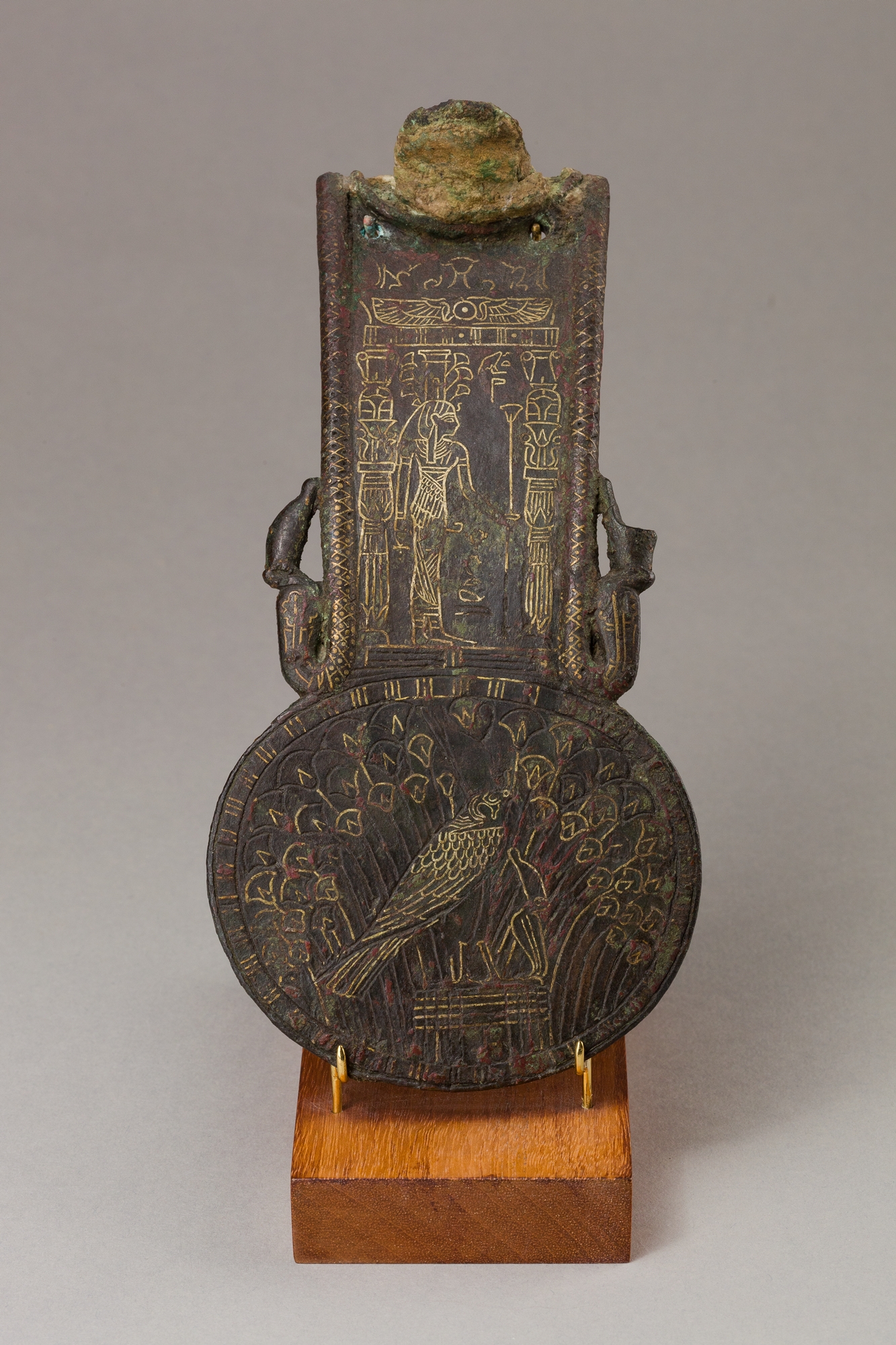Menat counterpoise for attachment to the missing aegis of a goddess
Third Intermediate Period–Late Period
The upper part of this menat depicts an elaborate light shrine with a goddess inside in precious metal inlay. Two small columns formed from Hathor emblem capitals above an open lotus and papyrus-bundle half-column support the roof. Its cornice is emblazoned with a winged sun-disk, and above a frontal Hathor emblem and two seated cats may be seen. The goddess beneath the shrine is labeled "the god's mother" and described as "residing in Sedjem(?)." Her sistrum-box crown, unusually here with plant decoration, indicates she is Nebethetepet, associated with Hathor and a kind of personification of the original creative act performed by the god Atum. On the roundel of the menat the falcon Horus may be seen among in a clump of papyrus in the marshes where he was hidden by his mother, Isis and sometimes Hathor, for safety.
This menat was part of a compound item that included a large aegis – a god’s head above a collar – affixed to the front. This form developed from menats with attached goddess heads. When the latter type was held in the hand at the side, the divine face and collar, essentially an aegis, was directed toward the ground – an undesirable effect. The compound aegis-menat instead sets the divine head at right angles to the menat.
Due to rights restrictions, this image cannot be enlarged, viewed at full screen, or downloaded.
This artwork is meant to be viewed from right to left. Scroll left to view more.






